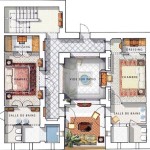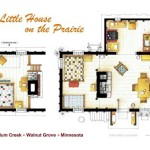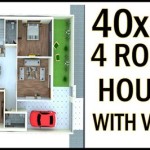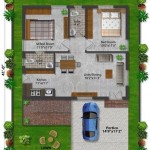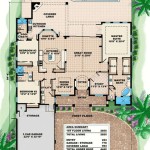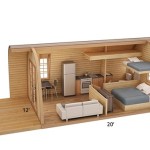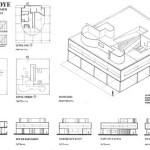Most Cost-Efficient House Plans: Designing for Affordability
Building a house represents a considerable investment for most individuals and families. Navigating the design phase with cost efficiency in mind is crucial to maintaining budgetary control and achieving the desired living space without incurring unnecessary expenses. Selecting appropriate house plans directly impacts material costs, labor requirements, and long-term maintenance. This article will explore key considerations for identifying and implementing cost-efficient house plans, focusing on design choices, construction techniques, and material selection.
Optimizing the Floor Plan for Reduced Construction Costs
The floor plan is the foundational element of any house design, and its complexity directly influences construction costs. Simple, rectangular shapes, such as square or rectangular layouts, generally prove more economical than complex, multi-angled designs. Minimizing the number of corners and projections reduces material waste, simplifies framing and roofing, and lowers labor costs associated with intricate detailing. Open floor plans, which integrate living, dining, and kitchen areas, can further contribute to cost savings. By reducing the need for interior walls, open layouts minimize material usage, streamline construction, and enhance the overall living space.
The size of the house is a primary cost driver. Carefully evaluating the actual space requirements and avoiding unnecessary square footage is essential. Each additional square foot translates directly into increased material and labor costs. Prioritize functionality and efficient space utilization. Instead of aiming for large, rarely used rooms, focus on designing adequately sized rooms that meet the specific needs of the occupants. Consider incorporating multi-functional spaces that can serve different purposes at different times. For example, a guest room could double as a home office or a playroom.
Vertical stacking of similar spaces can also significantly lower construction costs. Designing a two-story house with the kitchen above the kitchen and the bathrooms directly above each other can reduce plumbing runs. This strategy minimizes material usage and streamlines installation, leading to considerable savings. Furthermore, a smaller footprint translates to savings on foundation construction and excavation. Integrating the garage into the main structure, rather than building a detached garage, also simplifies construction and reduces overall building costs.
Material Selection and Sustainable Building Practices
Material selection profoundly impacts the overall cost of construction. Opting for locally sourced materials can reduce transportation costs and support local economies. Consider value engineering, which involves analyzing different materials and construction methods to identify the most cost-effective options without compromising quality or structural integrity. For example, using engineered wood products, such as oriented strand board (OSB) or laminated veneer lumber (LVL), can provide structural strength at a lower cost compared to solid lumber.
Prefabricated components, such as pre-engineered trusses or modular walls, can accelerate the construction process and reduce labor costs. These components are manufactured in a controlled environment, ensuring consistent quality and minimizing on-site waste. Furthermore, prefabricated elements often require less skilled labor for installation, further contributing to cost savings. However, it is important to compare the total cost, including delivery and installation, with traditional construction methods to determine the most cost-effective approach.
Sustainability considerations are not only environmentally responsible but also economically beneficial in the long run. Investing in energy-efficient windows, insulation, and appliances can significantly reduce utility bills. Implementing passive solar design principles, such as strategically orienting the house to maximize solar gain in winter and minimize solar heat gain in summer, can lower heating and cooling costs. Selecting durable, low-maintenance materials, such as fiber cement siding or metal roofing, can reduce long-term maintenance expenses and extend the lifespan of the house. Water-saving fixtures and rainwater harvesting systems can further contribute to reduced utility costs and environmental sustainability.
Simplifying Design and Minimizing Customization
Complex architectural details and extensive customization can significantly increase construction costs. Elaborate trim work, complicated rooflines, and custom cabinetry require specialized labor and increase material waste. Opting for simpler, cleaner designs can streamline the construction process and reduce overall expenses. Prioritizing standard building materials and avoiding hard-to-find or specialty items can further contribute to cost savings.
Minimizing the number of custom features and sticking to readily available options can significantly reduce both material and labor costs. For example, using standard window and door sizes can avoid the need for custom manufacturing, which is more expensive and time-consuming. Choosing stock cabinets and countertops instead of custom-built options can also result in considerable savings. While customization allows for personalization, it often comes at a premium. Carefully consider the trade-offs between personalization and cost efficiency.
Streamlining the permitting process is crucial for keeping construction on schedule and avoiding costly delays. Researching local building codes and regulations thoroughly can help ensure that the design complies with all requirements, minimizing the risk of rework or additional expenses. Working with an experienced architect or builder who is familiar with local regulations can also streamline the permitting process. Clear and concise communication with contractors and subcontractors is essential for avoiding misunderstandings and ensuring that the project stays on track. Regular site visits and progress meetings can help identify potential problems early on and prevent costly mistakes.
Careful planning and attention to detail during the design phase can significantly impact the overall cost of building a house. By prioritizing simple, efficient designs, utilizing cost-effective materials, and minimizing customization, individuals and families can achieve their dream home without exceeding their budget.
What Is The Est Type Of House To Build Blog Floorplans Com

Est House Plans To Build Simple With Style Blog Eplans Com

Building On The Affordable House Plans Of 2024 Houseplans Blog Com

Affordable Home Design Efficient Floor Plans

Building On The Affordable House Plans Of 2024 Houseplans Blog Com
Est House Plans To Build Simple With Style Blog Eplans Com
Est House Plans To Build Simple With Style Blog Eplans Com

Stylish And Simple Inexpensive House Plans To Build Houseplans Blog Com

Stylish And Simple Inexpensive House Plans To Build Houseplans Blog Com

Est House Plans To Build Simple With Style Blog Eplans Com

